Direct Labor Efficiency Variance (also known as Direct Labor Usage
Variance or Direct Labor and Direct Labor Quantity Variance) shows
the difference between the number of actual hours worked allocated per unit and
the number of budgeted or standard hours allocated per unit multiplied by Standard Labor Rate. The formula
to calculate Direct Labor Efficiency Variance is as follows:
Direct Labor Efficiency
Variance = (Direct Labor Hours – Standard labor hours) * Standard Labor Rate
Direct Labor Hours are
actual hours worked by employees. Direct Labor Hours are also used to calculate
Labor
Rate Variance
Standard Labor hours are
estimated labor hours to produce required number of units.
If Direct Labor Hours are
greater than Standard labor hours, the variance is unfavorable. If Direct Labor
Hours are less than Standard labor hours, the variance is considered favorable.
In other words, using the formula above, if the value is negative, Direct Labor
Efficiency Variance is favorable, if the value is positive, Direct Labor
Efficiency Variance is unfavorable.
For example, if a company with Standard Labor Rate
$21 USD budgeted 4000 Standard labor hours to produce 2000 units, Direct Labor
Cost would be $84,000 USD (4000 Standard labor hours * 21 USD). If the actual
number of hours to produce the same number of units was reported as 3600 labor
hours, Direct Labor Cost would be $75 600 USD (3600 labor hours * $21 USD). The
hour variance was 400 labor hours (4000 – 3600). According to the formula
Direct Labor Efficiency Variance should be calculated as follows:
Direct Labor Efficiency
Variance = (Direct Labor Hours – Standard labor hours) * Standard Labor Rate =
(3600 4000) * $21 USD = -8400
The negative value would
speak about favorable Direct Labor Efficiency Variance.
The sum of Direct Labor
Efficiency Variance and Labor Rate Variance help you measure the total direct
labor variance.
To calculate Direct Labor Efficiency Variance please
follow the steps below:
- Add custom
field “Direct
Labor Hours” (used to calculate Actual Labor Cost) with Code “cf_direct_labor_hours”
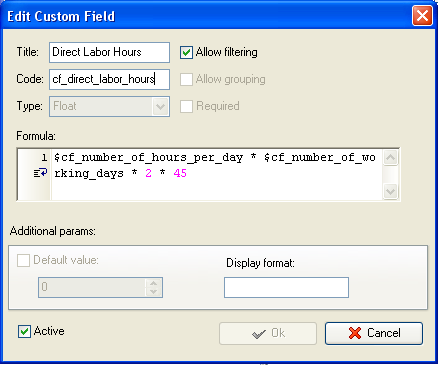
- Add custom
field “Standard labor hours” with Code “cf_standard_labor_hours”
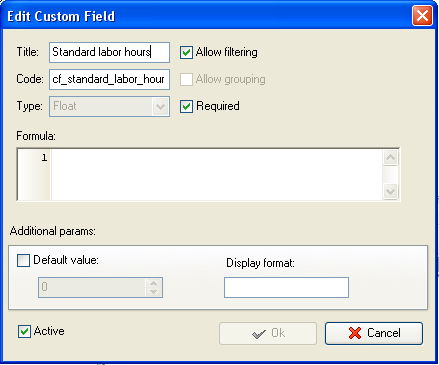
- Add custom
field “Standard Labor Rate” with Code “cf_standard_labor_rate“ and the
formula:
$cf_average_wage_rate +
$cf_average_employment_taxes + $cf_average_fringe_benefits
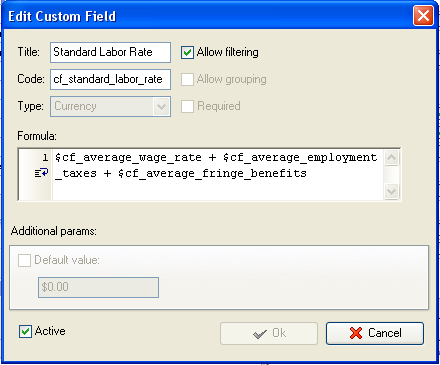
- Add custom
field “Direct Labor Efficiency Variance” with formula:
($cf_direct_labor_hours $cf_standard_labor_hours) *
$cf_standard_labor_rate
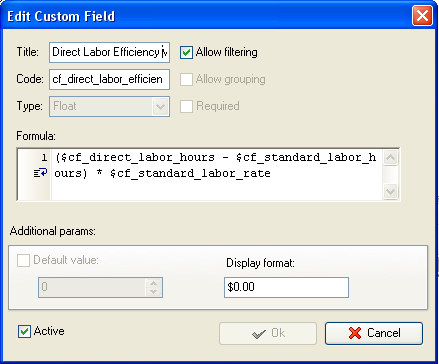
- On Task Tree select task group for which you need to display Direct
Labor Efficiency Variance and select “Custom fields
options”
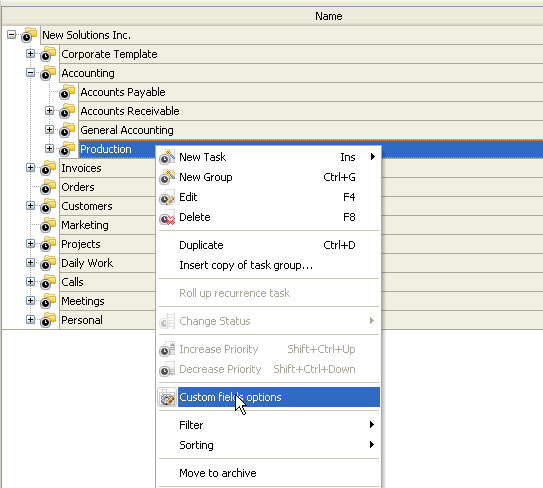
- Set the following custom fields settings for the custom fields “Standard
Labor Hours”:
- In “Settings for” select “This task group”
- select “Enable”
- select “Edit”
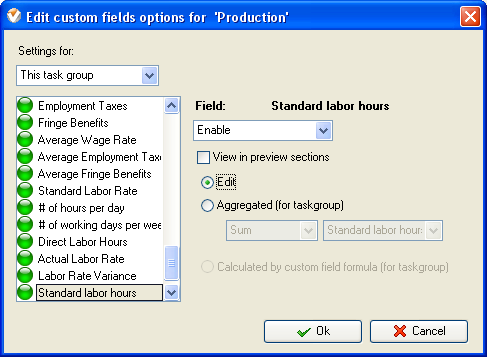
- To fill in
the custom fields at the task group right click on task group and select
“Edit”
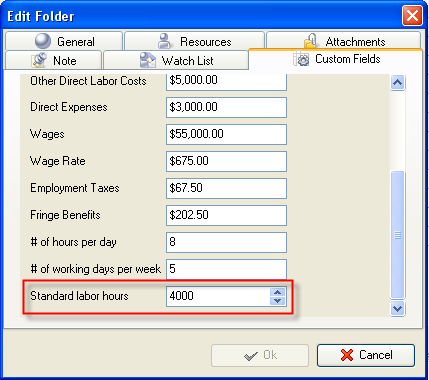
- Set the following custom fields settings for the custom fields “Direct
labor Hours”, “Standard Labor Rate” and “Direct Labor Efficiency Variance”:
- In “Settings for” select “This task group”
- select “Enable”
- select “Calculated by custom field formula (for task group)”
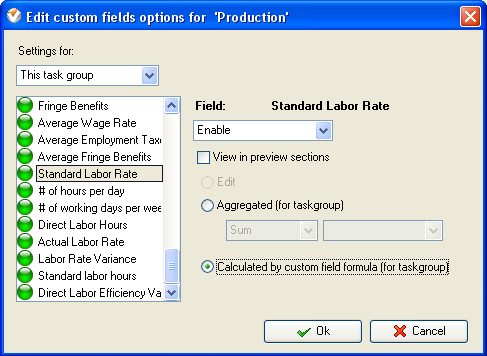
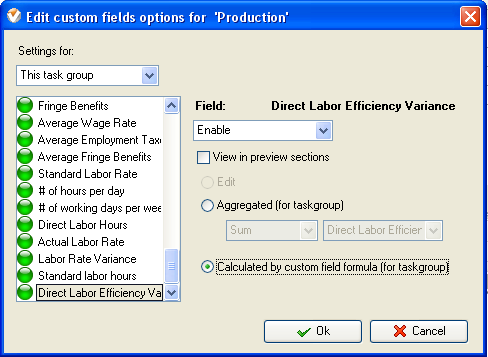

Direct Labor
Efficiency Variance on Task Tree
